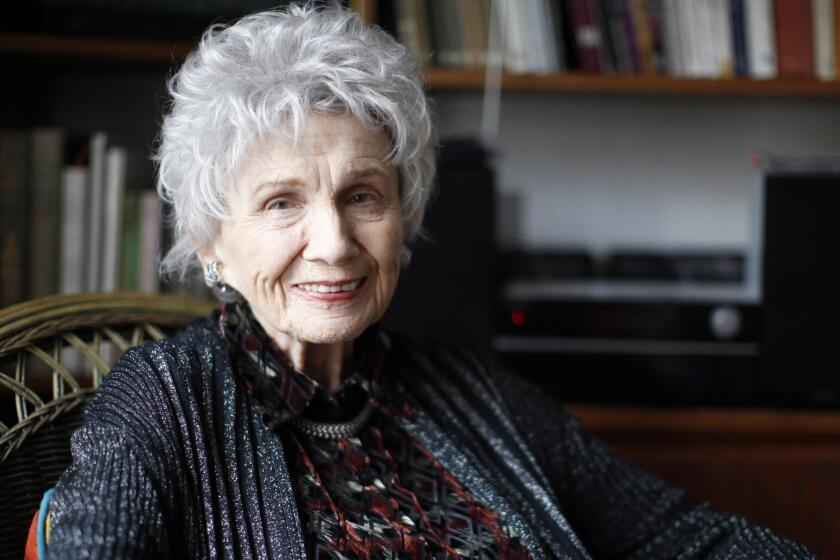Book reviews: Two Civil War anthologies
Hearts Touched by Fire
The Best of “Battles and Leaders of the Civil War”
Edited by Harold Holzer
Modern Library: 1,264 pp., $38
The Civil War
The First Year Told by Those Who Lived It
Edited by Brooks D. Simpson, Stephen W. Sears and Aaron Sheehan-Dean
Library of America: 814 pp., $37.50
The sesquicentennial commemoration of the Civil War is contested territory. A “secession ball” held last December in Charleston, S.C., and the Feb. 19 reenactment of the inauguration of Jefferson Davis as president of the Confederate States of America in Montgomery, Ala., signal controversy, not consensus. Eerily, these noisy remembrances in the South have been accompanied by loud silences from politicians and press signifying that we are not quite sure how to remember the Civil War.
How can we best enter this controversial territory? Two excellent anthologies commend themselves to readers who want to hear and feel the immediacy of the Civil War as experienced by its participants.
“Hearts Touched by Fire: The Best of ‘Battles and Leaders of the Civil War’” brings to 21st century audiences a remarkable series of essays that captivated 19th century audiences two decades after the Civil War’s conclusion. Harold Holzer, eminent Civil War and Lincoln historian, invited distinguished historians and biographers James McPherson, James Robertson, Stephen W. Sears, Craig Symonds and Joan Waugh to help him select the best of the 99 essays serialized in the Century magazine beginning in 1883 and subsequently published as four volumes in 1888.
The young editor of the Century, Richard Watson Gilder, joked of being busy with “general catching” as he approached the Civil War’s military’s leaders to write about the leading battles of the war. He caught them: Union generals Ulysses S. Grant and George B. McClellan; Confederate generals James Longstreet, Jubal Early and John Bell Hood. Yes, they defended battle strategies and sometimes sought to settle old scores, but their essays allow the reader to enter into the thinking and feeling of the leaders as they describe vividly the most significant battles of the war.
Holzer’s introduction is worth the price of admission: He allows his readers to sense the behind-the-scenes conversations that produced these remarkable first-person essays. The editors knew that the biggest general to catch was Grant. The general and ex-president turned away their opening overture, but with the failure of Grant & Ward on Wall Street in 1884, resulting in the loss of all of Grant’s assets, he agreed to write an essay on Shiloh for $500. The present editors include four of Grant’s Century essays. Reading them here allows us to understand why Grant’s “Personal Memoirs,” completed in 1885 as he was dying from throat cancer, became the surprising standard for all future presidential memoirs.
Once Grant was in, others were easier to catch, and Grant did some of the catching, persuading William T. Sherman, Adm. David Dixon Porter and Gen. James Longstreet, the leading Confederate general still alive after the death of Robert E. Lee, to participate.
Each member of Holzer’s team of co-editors offers an introduction for every year of the war that helps readers better understand the essays that follow. “No one who signed off on the project in 1883,” Holzer explains, “could have imagined the scope, size, importance, or enduring reputation that it eventually achieved.” Within six months the Century’s readership grew by 80%, and in an era in which people shared magazines, it is estimated that 2 million people read each issue.
“The Civil War: The First Year Told by Those Who Lived It” is the first of four volumes to be published by the Library of America to commemorate each of the four years of the war. It was edited by three eminent Civil War historians, Brooks D. Simpson, Sears and Aaron Sheehan-Dean, who together have woven a rich tapestry from the threads of diaries, letters, military reports, newspaper articles, memoirs and poems. If the essays in “Hearts Touched by Fire” were written by leaders, this anthology self-consciously expands the parameters to include so-called ordinary people whose diaries, letters and reminiscences shed light on the war.
What was their criterion for the inclusion of the 122 selections? “Selections have been chosen for their historical significance, their literary quality, and their narrative energy,” the editors explain in an introduction.
Energy! The modern reader will be struck by the energy, power and literary expression in private letters and diaries written in 1861. Since the centennial of the Civil War in 1961, social historians have enlarged the range of voices we hear in remembering the past. Thus, in addition to the words of President Abraham Lincoln and Confederate President Jefferson Davis, and leading Union and Confederate generals, many readers will hear for the first time the voices of women, North and South, and African Americans, slave and free.
The firing upon and surrender of Ft. Sumter 150 years ago this month began the heroic but tragic epic war that would cost the lives of 620,000 people — as many as all of our other wars put together. The editors’ selection of seven documents that allow us to hear the responses to Ft. Sumter are a microcosm of what the reader can expect in this anthology. We look over the shoulder of Mary Chestnut, who, from inside her Charleston hotel room, confides her Southern response to this momentous event in the pages of her diary. We hear Abner Doubleday, an officer in the Union garrison inside the fort, who writes about it in his reminiscence.
We read an entry from George Templeton Strong, a New York lawyer, whose remarkable diary begun in 1835 would not be discovered until the 1930s. Strong wrote daily for 40 years and his entry on the evening of April 13, the day of the surrender of Ft. Sumter, reads: “So Civil War is inaugurated at last. God defend the Right.” He continued, “It is said the President will assume the right to call for volunteers, whether the law give it or not. If he does, there will soon be a new element in the fray; viz., the stern anti-slavery Puritanism that survives in New England and in the Northwest.”
We can read April 15 editorials from the New York Times and the Pittsburgh Post, Republican and Democratic newspapers, which underscore the highly partisan press of the day. The New York Times editorialized, “The reverberations from Charleston harbor have brought about what months of logic would have been impotent to effect — the rapid condensation of public sentiment in the Free States.”
Be prepared to be surprised, amused, upset, enlightened, but most of all — engaged. It is always possible to quibble with selections in any anthology. Although there are four selections from free black leader Frederick Douglass, there are no selections from slaves. Because the first volume is confined to 1861, I am confident the contributions of slaves will be included in the next three. In the years ahead, 21st century historians, biographers and political commentators will offer many words about the meaning of the Civil War. I suggest beginning your appreciation of the meaning of the war by hearing it from its 19th century participants themselves.
White is the author of “A. Lincoln: A Biography.” He is writing a biography of Ulysses S. Grant, which will be published by Random House.
More to Read
Sign up for our Book Club newsletter
Get the latest news, events and more from the Los Angeles Times Book Club, and help us get L.A. reading and talking.
You may occasionally receive promotional content from the Los Angeles Times.






